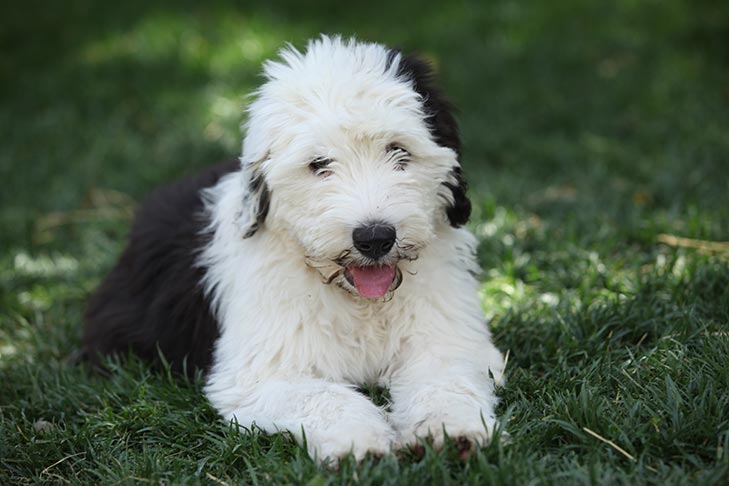Trick Dogs can involve not only speedy smaller breeds, but also large and giant breeds, too. I train and compete with a Newfoundland, and it’s always fun to shatter expectations about what tricks a dog of that size can do. If you have a large dog and are interested in getting involved with trick training, here’s what you should keep in mind, as well as tips to get started.
Safety First
When evaluating whether a trick is going to be a good fit, consider any physical limitations you or your dog have. For example, some tricks, such as rebounding off the handler‘s body or foot stalls (balancing on the handler’s feet), aren’t realistic options for most giant breeds. But other tricks may be possible if you get a little creative with modifications. Such adjustments might include teaching your giant dog to duck their head when doing leg weaves. This way, they won’t accidentally knock you over.

Similarly, large-breed and giant-breed dogs generally have a shorter lifespan than smaller dogs. As a result, they will become senior dogs earlier than other breeds. As your pup ages, be thoughtful about how physically demanding your trick routines are.
Best Tricks for Big Dogs
Pay attention to what kinds of tricks your pet enjoys and build off that. With more experience in learning tricks, your dog will develop more confidence. Added experience will make it easier for your large dog to learn tricks that require body control to maneuver themselves; such tricks include orbit (running backwards around the handler), side passes, limping, or jumping through a tissue paper hoop.
Tricks that don’t rely on your dog utilizing your body as a handler work well for large or giant dogs. If you’re just getting started, Novice level tricks that work well include fetch, finding a treat or scent object, barking on cue, high five, kiss, shake hands, spin in circles, and touch.

Advanced and Performer level tricks that are great starting points for large and giant dogs include “head down,” turning on a tap light, playing dead, bows, covering your eyes, blowing bubbles, and soccer.
Train With Props
It is easy to find appropriately-sized props for large and giant dogs. For example, toddler-sized basketball hoops, tennis rackets, toy mailboxes, and ring-stacking sets all work well. From playground balls and large building blocks to larger items like play kitchens, the possibilities for turning toys into trick props for big dogs are endless. Just don’t forget that kids’ toys are not designed for dogs, and be sure to keep an eye on your pup to prevent them from chewing on these props.
Getting Started
With the obvious exceptions of physically impossible tricks, giant dogs can learn all the same tricks as smaller dogs! Though the bigger breeds might perform some of these tricks more slowly than their smaller counterparts, they can and will enjoy learning. And of the great things about tricks as a sport is that you and your dog can earn titles, but you won’t be competing against any other pups.

